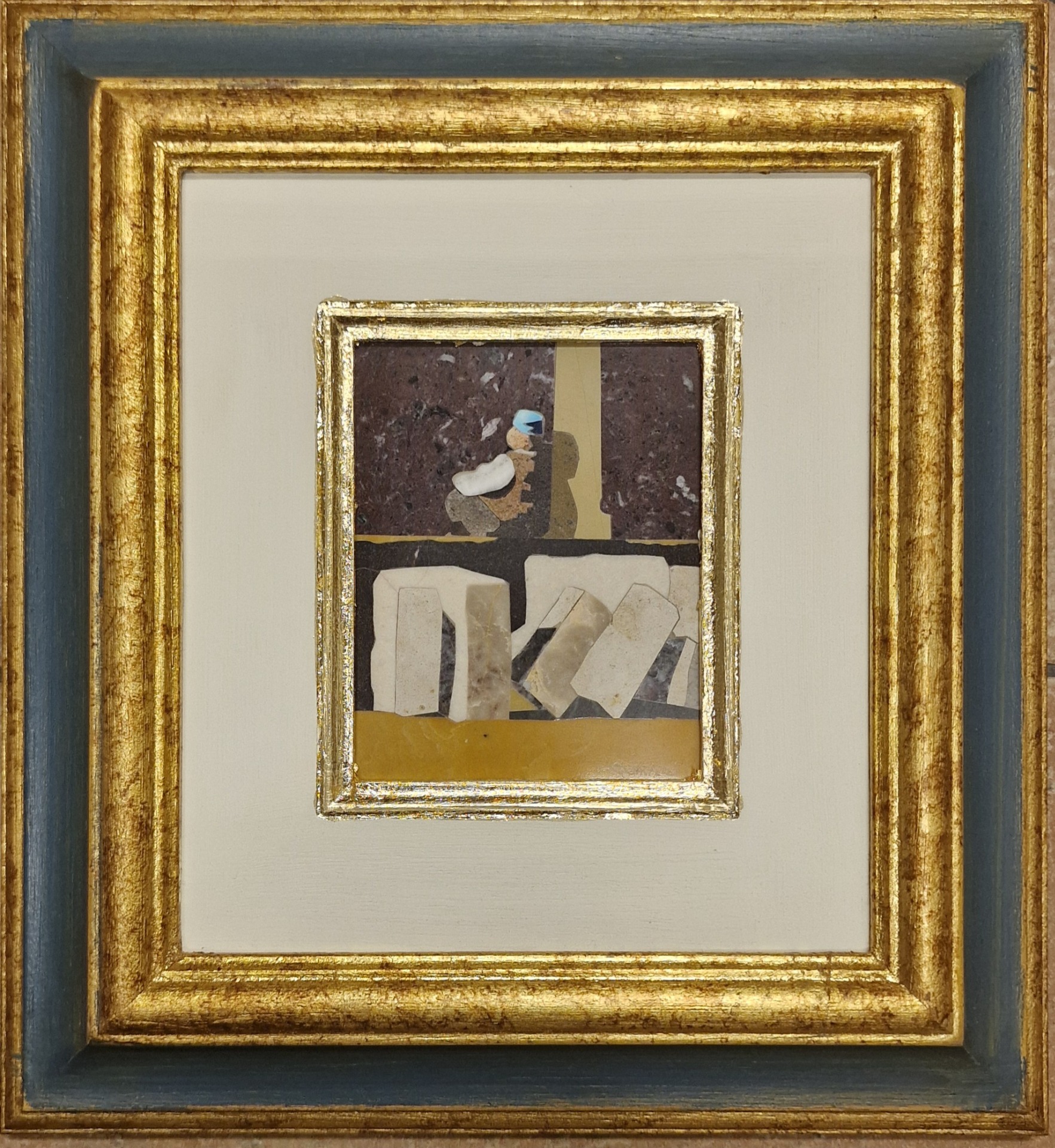Marbles

The artwork intends to commemorate the processing of marble, carried out mainly in the localities of Pietrasanta and Carrara. Carrara marble has always been a precious element, once indicating the presence of noble houses or high officials in a specific environment. As already mentioned, it is the marble par excellence, with which all the great sculptors have measured themselves. Nowadays, the main uses of Carrara marble have become much more common, finding it in many domestic environments.
It is extracted from the quarries of the Apuan Alps, in Tuscany, and represents the most valuable type of marble in the world. It is no coincidence that it is the material in which some of the most famous works of art such as Michelangelo's Pietà and Canova's Cupid and Psyche are sculpted.
This material is characterized by a homogeneous background of bright granules with a color ranging from white to greyish. Marbles are metamorphic rocks, i.e. rocks that have undergone a transformation during different geological eras due to the strong pressures and temperatures to which they have been subjected.
It all starts with limestones, sedimentary rocks that form in a marine environment by compression of calcium carbonate (CaCO3) coming from skeletons and shells of different animal species and algae. When limestones are subjected to pressure of a few thousand atmospheres and temperatures around 400°C, they undergo radical transformations. The calcium carbonate organizes into white calcite crystals, and the impurities are transformed into stable products.
The real and great revolution in extraction technique occurred at the end of the nineteenth century with the inventions of the helical wire and the penetrating pulley. Steel wire is a cable of 4–6 mm in diameter, obtained by twisting three wires into a helix. The grooves thus created have the function of transporting and distributing, along the cut made by the cable, the water and silica sand, originally coming from Massaciuccoli, which serve the abrasive action.
The helical wire, arranged in a circuit on special return pulleys fixed to special tables called potò, is generally a few hundred meters long and moves at a speed of 5-6 m/s, while it cuts into the marble at a rate of 20 cm per hour. The penetrating pulley is a steel disc characterized, on the circumference, by a groove and small diamond teeth. Through these two ingenious technical devices the pulley, sliding on a special rack tool called "machine" which allows it to be regulated and continuously lowered, simultaneously performs two functions: as it penetrates the marble it drags the helical wire into the groove which causes the cut of the block.
Before starting to cut upstream and starting any work on the square, it was necessary to free the mountain from that part of rock made useless by the superficial alteration. For this work of agility and skill the "Tecchiaiolo" intervened and had the task of closely examining the marble, freeing it from unsafe parts: to do this he had to lower himself, hanging from a rope, in front of the quarry face.
The cutting of the mountain consisted of isolating from the marble body that constitutes the deposit, a gigantic portion of rock, called bank, of a shape and size defined according to the blocks that one wanted to obtain. Having separated the bank from the rocky mass, the quarrymen proceeded to overturn it onto the quarry square.
This impressive operation presented considerable difficulties and its execution entailed serious risks. In the meantime, the so-called "bed" was being prepared in the square, consisting of a pile of fine marble debris mixed with the sludge produced by previous work, to cushion the fall of the bank and limit breakages. Once on the square, the bench was washed to be examined by the more expert quarrymen who identified the impurities and marked the points where any cuts could be made. The next operation was scaling into commercial size blocks with the diamond wire cutter.
A very delicate operation: every error, in fact, risked decreasing the yield of the entire bank and producing blocks of a lower value than the quality of the marble had hoped for. Then the square cutters came onto the scene, trying to give the block a square shape with the help of a hammer and a hammer. It was difficult, heavy work, and those quarrymen had to be strong, patient and capable.
Finally, diamond wire was introduced, currently in use, whose introduction initially created problems of work safety due to the ease of unhooking, a problem that has now been corrected.
Once the block of marble has been extracted from the quarry, it is sawn into slabs (2, 3 cm or more thick).
Stones used: Calcedony, Paesina.
Year of composition: 2024
Size: cm 8x10
Artist: Leonardo Scarpelli
An original and authentic hand-made artwork created whith the antique technique of Commesso Fiorentino which is unique for Florence.
Commesso Fiorentino was born with Medici family, one of the most important families in Florence, in the second half of 1500.
The research of the stones is made by the mosaicist that must be able to choose from a rich and wide range of shades and veins: for this reason the artists personally search and collect the stones retracing the paths of the Medici researchers.
The processing starts by drawing the subject on adhesive paper, that is then cut into small tamplates that will be attached to the variegated shades of the stones following the visual instinct, the innate gift of the artist and his perfect knowledge of the materials. The shape of the little piece will be cut by hand with a chestnut, cherry or hazelnut wood bow and an iron wire that flows with abrasive powder and water. It creates a very precise and inclined cut to form the essential spaces to accommodate the glue, made by artisans with beeswax and pine tree resin. The different stones are previously glued onto a slate surface which acts as a support during the cutting and filing phase. The various pieces which form the composition are adjusted in shape with diamond files, glued together so that the joints are invisible, flattened and finally polished in order to create a perfect decorative harmony showing the colors of nature in all their radiance.
